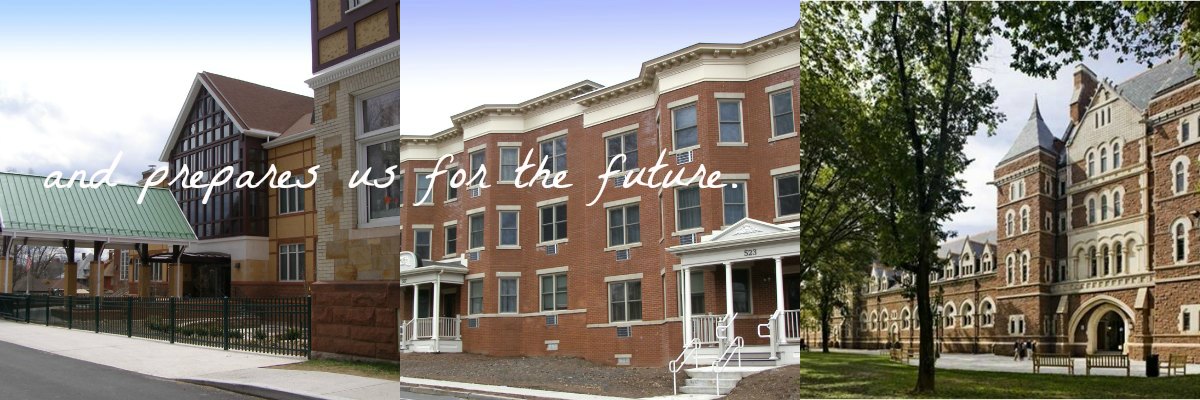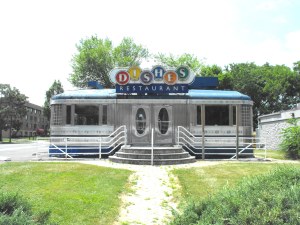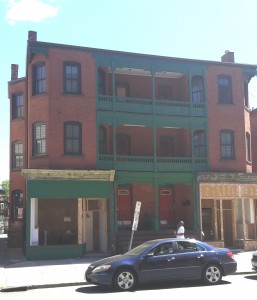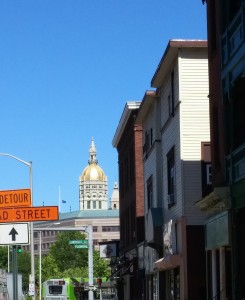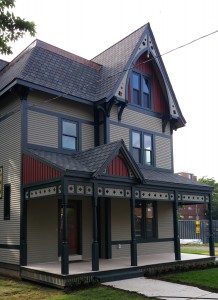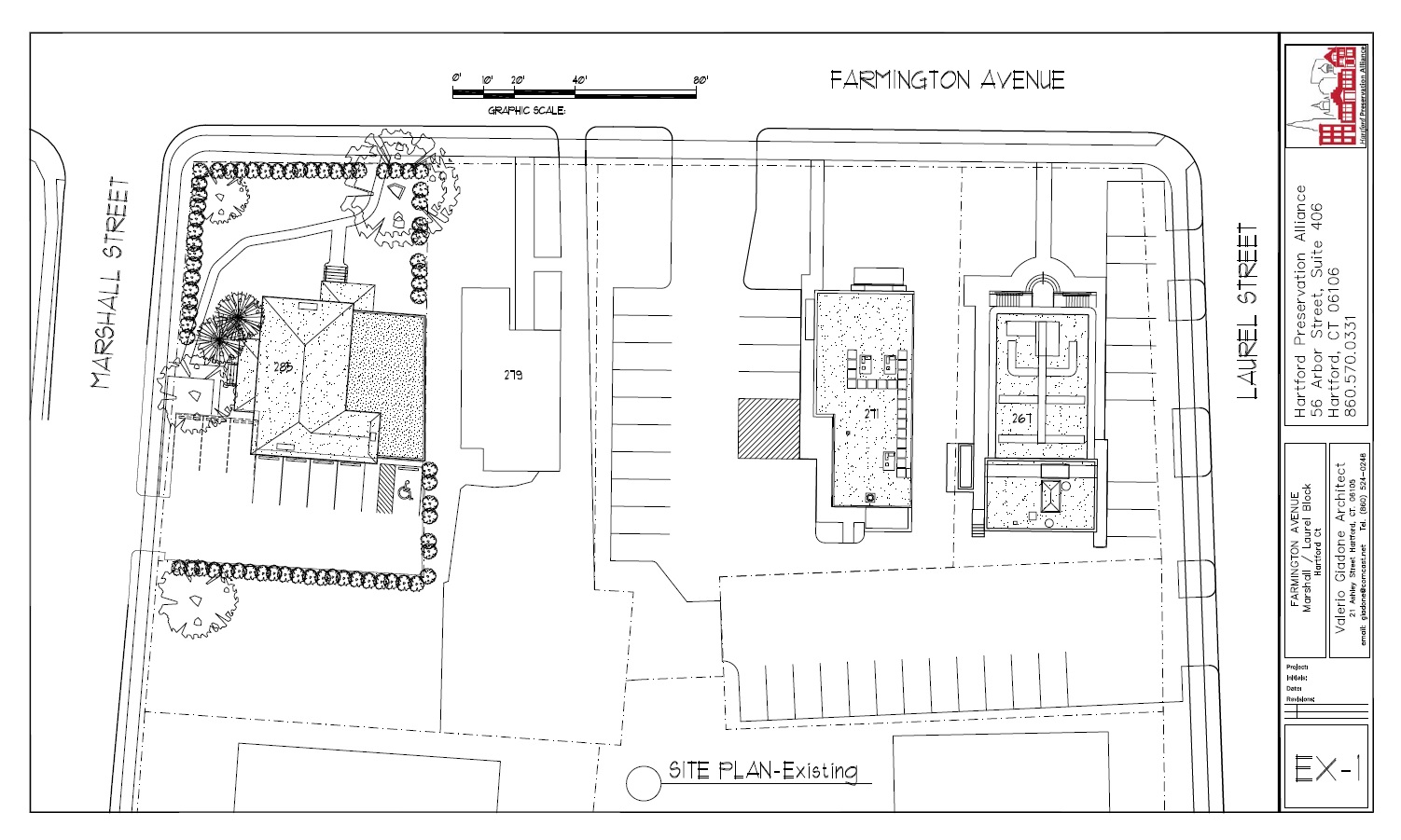 The week is being spent in Indianapolis. I have previously written about the Preservation Alliance’s initiative to re-purpose and reuse the Comet Diner as a center for food entrepreneurs. So I am spending time shadowing a business, Indy’s Kitchen, founded and run by an old friend and colleague Linda Gilkerson. Linda has spent decades teaching, promoting and sponsoring entrepreneurs and small businesses. Out of boredom she determined to start her own business and it has been a success. Her vision was to create a commercial kitchen that can be hired by the hour to support food entrepreneurs. Her “customers” are food truck owners, caterers, chefs, and entrepreneurs with a dream of producing food which requires its creation in a licensed and regulated kitchen. In Indianapolis there are roughly 100 food trucks, each of which is required to be tethered to a regulated kitchen. Indy’s Kitchen is home to 26.
The week is being spent in Indianapolis. I have previously written about the Preservation Alliance’s initiative to re-purpose and reuse the Comet Diner as a center for food entrepreneurs. So I am spending time shadowing a business, Indy’s Kitchen, founded and run by an old friend and colleague Linda Gilkerson. Linda has spent decades teaching, promoting and sponsoring entrepreneurs and small businesses. Out of boredom she determined to start her own business and it has been a success. Her vision was to create a commercial kitchen that can be hired by the hour to support food entrepreneurs. Her “customers” are food truck owners, caterers, chefs, and entrepreneurs with a dream of producing food which requires its creation in a licensed and regulated kitchen. In Indianapolis there are roughly 100 food trucks, each of which is required to be tethered to a regulated kitchen. Indy’s Kitchen is home to 26.  There are caterers who need space to prepare food for clients but again must be done in a regulated environment. One such caterer set up a business to provide unique wedding feasts. Her first year she was engaged to do six weddings, this year, her third in business, she has booked 58! She is now taking orders into 2017. Indy’s Kitchen provides the framework and the platform to allow food entrepreneurs a place to follow a dream to cook and sell food. It has provided encouragement and support to foodies of many stripes. The economic impact of this incubator was studied in 2014 and the statistics are encouraging. For Hartford the potential of establishing such a site can be profound. In future blogs and on our website we will begin to post a series of documents which show the import of food incubators nationally.
There are caterers who need space to prepare food for clients but again must be done in a regulated environment. One such caterer set up a business to provide unique wedding feasts. Her first year she was engaged to do six weddings, this year, her third in business, she has booked 58! She is now taking orders into 2017. Indy’s Kitchen provides the framework and the platform to allow food entrepreneurs a place to follow a dream to cook and sell food. It has provided encouragement and support to foodies of many stripes. The economic impact of this incubator was studied in 2014 and the statistics are encouraging. For Hartford the potential of establishing such a site can be profound. In future blogs and on our website we will begin to post a series of documents which show the import of food incubators nationally.
Finally, and not the least savory part of this blog, is my desire to introduce you to Rob 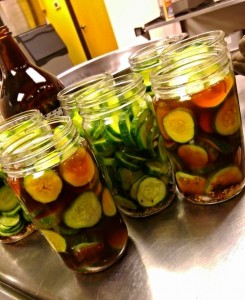 Carmack who founded Indiana Pickle Company. Take a moment to cruise the website. I met Rob who was nice enough to offer an array of his pickles. Personally I am a major pickle fan. Indiana Pickles are the BEST! Rob determined to replicate the pickles he loved which were made by his mother from a unique brining method. Apparently this involves barrels which once held beer. At his family’s encouragement he explored making greater quantities and exploring various brining methods using different raw vegetables/fruits. He now has developed an array of pickles that utilize former whiskey barrels and locally brewed beers and ales. Read the story on his website. His business has grown to the point where he will soon leave Indy’s Kitchen for a dedicated production site. He can’t produce enough pickles to keep up with the demand. By the way his cucumbers and other produce are locally sourced. He has recently contracted with a local farmer to grow all the vegetables necessary for his production needs. The pickles are truly tasty!
Carmack who founded Indiana Pickle Company. Take a moment to cruise the website. I met Rob who was nice enough to offer an array of his pickles. Personally I am a major pickle fan. Indiana Pickles are the BEST! Rob determined to replicate the pickles he loved which were made by his mother from a unique brining method. Apparently this involves barrels which once held beer. At his family’s encouragement he explored making greater quantities and exploring various brining methods using different raw vegetables/fruits. He now has developed an array of pickles that utilize former whiskey barrels and locally brewed beers and ales. Read the story on his website. His business has grown to the point where he will soon leave Indy’s Kitchen for a dedicated production site. He can’t produce enough pickles to keep up with the demand. By the way his cucumbers and other produce are locally sourced. He has recently contracted with a local farmer to grow all the vegetables necessary for his production needs. The pickles are truly tasty!
Food, business savvy, a regulated space and entrepreneurs all combine to make a recipe for community economic development. Please continue to follow us as we pursue a strategy to reuse one of Hartford’s more iconic historic properties.
[jetpack_subscription_form]





